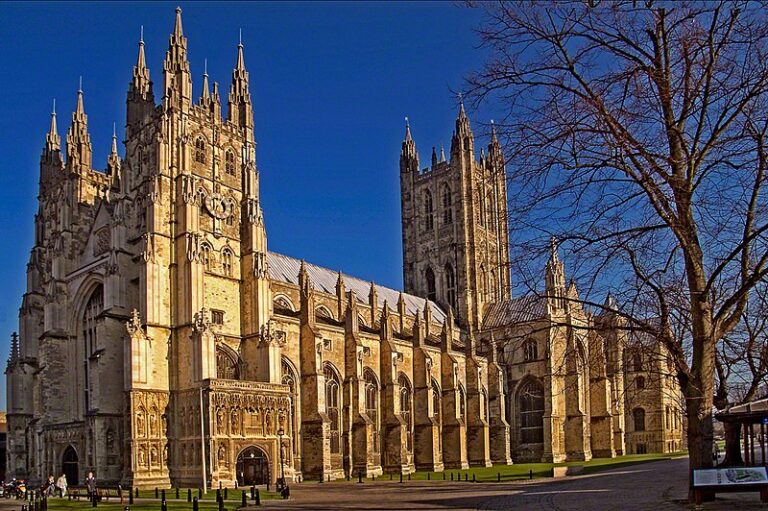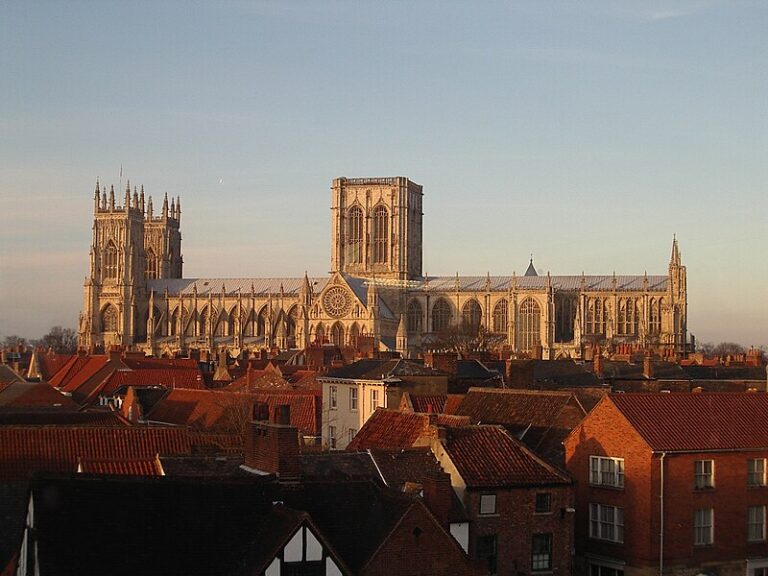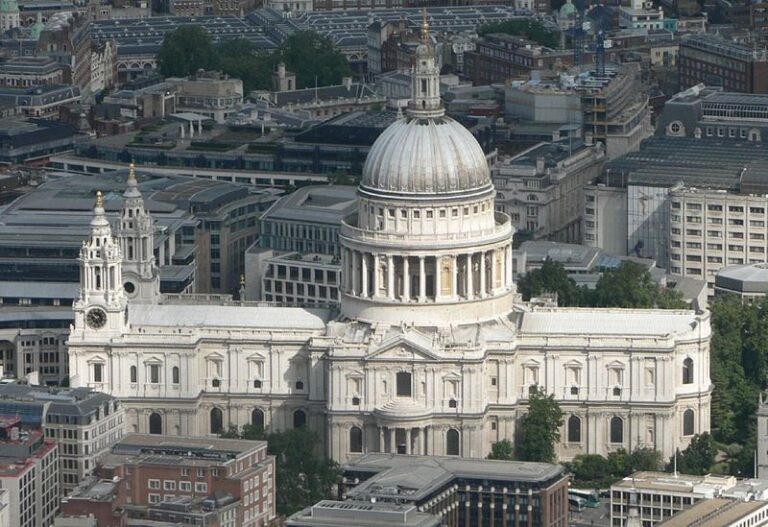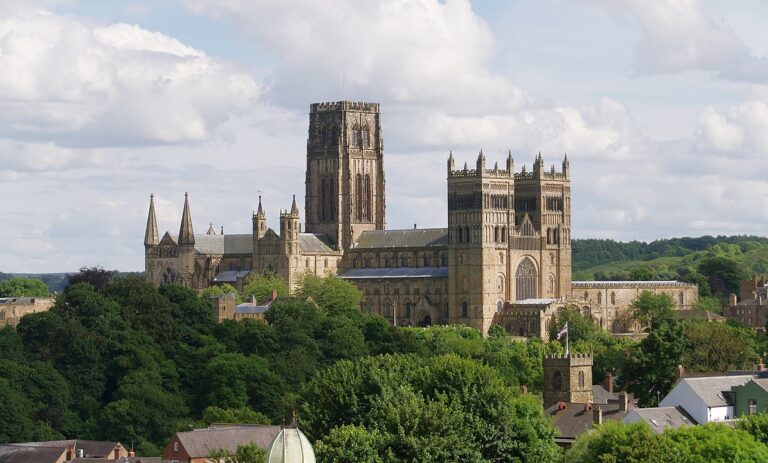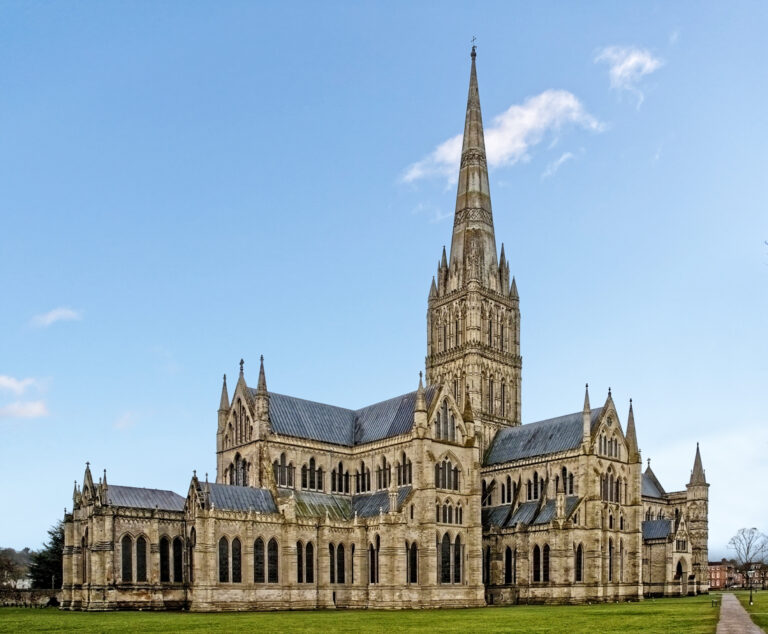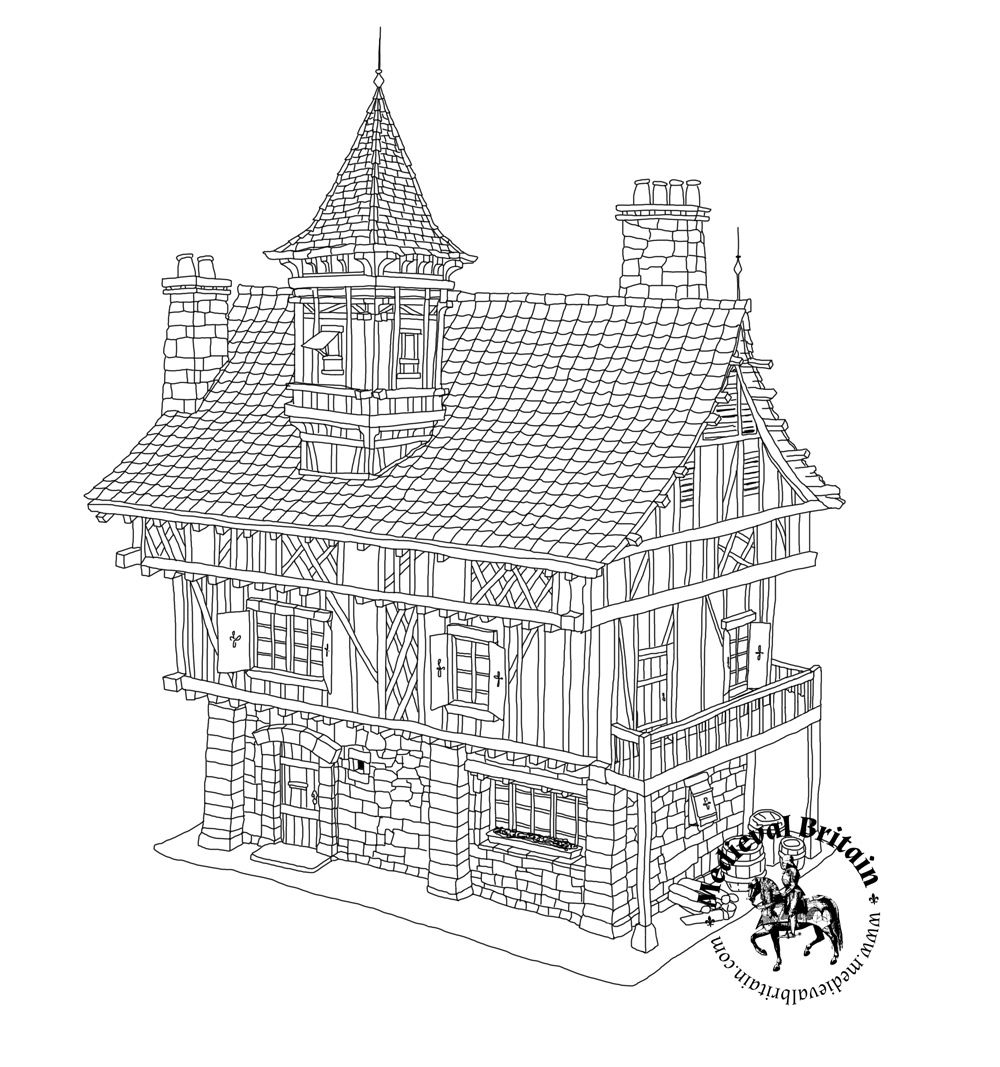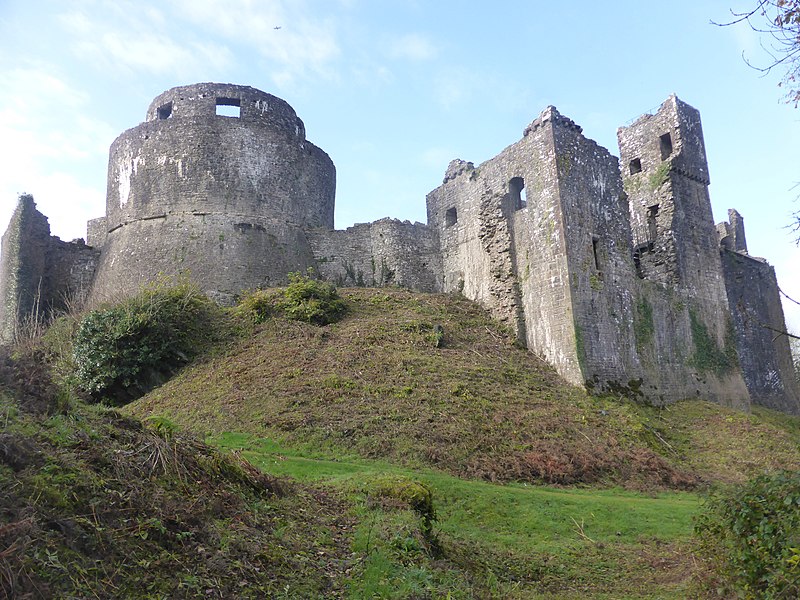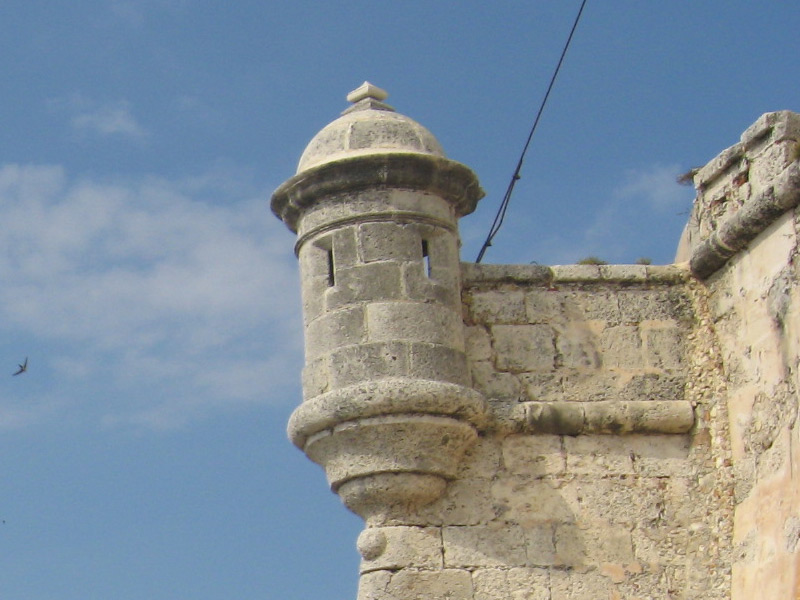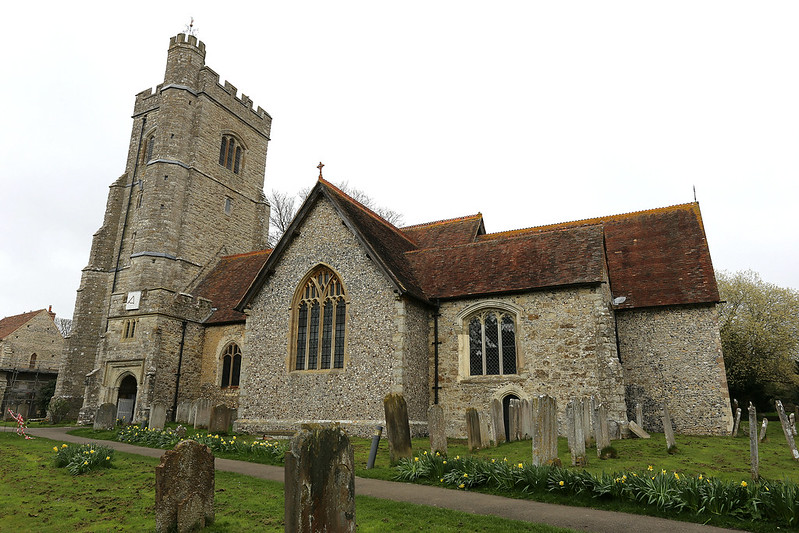Take a virtual tour through some of the most breathtaking medieval cathedrals, uncovering their awe-inspiring architecture, intricate stained glass, and spiritual significance.
Why Did Medieval People Build Cathedrals?
We start with a simple question, but one I have asked myself when I first began looking into what it meant to live in medieval times. Considering how much effort went into creating these magnificent buildings, what were the religious and societal motivations?
Here are some key reasons behind the construction of cathedrals during the Middle Ages:
> Cathedrals were Spiritual and Religious Centres
Cathedrals were intended to serve as the central place of worship for a diocese or a bishopric. They were built as grand expressions of faith, dedicated to the glory of God and as a symbol of the divine presence on Earth. The towering spires and awe-inspiring architecture aimed to inspire reverence and awe among the faithful.
> Cathedrals were Pilgrimage Sites
Many cathedrals were constructed along significant pilgrimage routes, attracting large numbers of pilgrims who sought spiritual fulfilment and the opportunity to venerate relics believed to possess miraculous powers. These pilgrims brought economic benefits to the surrounding communities, increasing trade and prosperity.
The Medieval Relic
A relic refers to an object that is believed to have a direct connection to a holy figure or event from the past. Relics held significant religious and spiritual importance in medieval Europe, and they played a central role in the religious practices and beliefs of the time.
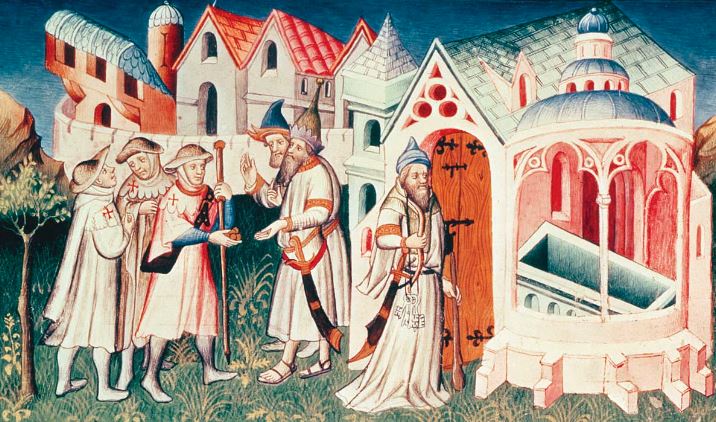
> Cathedrals Gave Social Status and Prestige
Building a magnificent cathedral displayed wealth, power, and prestige for bishops, nobles, and monarchs. It served as a statement of their authority and devotion, showcasing their dedication to the church and their role as patrons of religious institutions.
> Other Reasons
Here are some additional key reasons behind the construction of cathedrals during the Middle Ages:
Economic and Urban Development: The construction of cathedrals often sparked urban development. Cities and towns grew around these monumental structures as they became centres of religious, cultural, and commercial activities. Pilgrims, clergy, artisans, and merchants flocked to these areas, creating a bustling economy and contributing to the growth of communities.
Education and Knowledge: Cathedrals served as centres of learning and education. Cathedral schools were established to train clergy and laypeople in subjects such as theology, philosophy, law, and sciences. The pursuit of knowledge and intellectual advancement was closely tied to the religious mission of the church.
Commemoration and Legacy: Cathedrals were often built to commemorate significant events or individuals. They served as lasting tributes to saints, martyrs, or rulers, perpetuating their memory and ensuring a place of remembrance for future generations.
The Architectural and Technological Achievement of Cathedrals
The construction of cathedrals pushed the boundaries of architectural and engineering techniques during the Middle Ages.
The design and construction of these massive structures required skilled craftsmen, including masons, stone carvers, stained glass artists, and more. Advancements in construction methods and techniques pioneered during cathedral building projects had a lasting impact on architectural development.
The Best Cathedrals in Great Britain
Great Britain is home to numerous magnificent cathedrals, each with its own unique history and architectural splendour. While it’s subjective to determine the “best” cathedrals, here are five notable ones that are widely regarded for their significance and grandeur:
Canterbury Cathedral (Canterbury, England)
As the seat of the Archbishop of Canterbury, Canterbury Cathedral holds immense religious and historical importance. It is the mother church of the worldwide Anglican Communion and the site of Thomas Becket’s martyrdom. The cathedral’s stunning Gothic architecture, including the Trinity Chapel and the Bell Harry Tower, attracts visitors from around the world.
York Minster (York, England)
With its monumental Gothic architecture and vast stained glass windows, York Minster is an architectural masterpiece. It is one of the largest cathedrals in Northern Europe and boasts the Great East Window, the largest expanse of medieval stained glass in the world. The soaring nave and intricate stone carvings make it a must-visit destination.
St. Paul's Cathedral (London, England)
Located in the heart of London, St. Paul’s Cathedral is an iconic city symbol. Designed by Sir Christopher Wren after the Great Fire of London, it showcases magnificent Baroque architecture. Visitors can ascend to the dome’s Whispering Gallery for panoramic views of the city or explore the beautiful interior, including the intricate mosaics and the crypt where many notable figures are buried.
Durham Cathedral (Durham, England)
Perched atop a hill overlooking the city of Durham, Durham Cathedral is a UNESCO World Heritage Site. Its Norman architecture, highlighted by the massive Durham Castle nearby, is awe-inspiring. The cathedral is renowned for its ribbed vaulting, stunning stained glass, and the Shrine of St. Cuthbert, attracting pilgrims and visitors alike.
Salisbury Cathedral (Salisbury, England)
Salisbury Cathedral is celebrated for its remarkable Early English Gothic architecture and its 404-foot spire, the tallest in the United Kingdom. It is also home to the best-preserved copy of the Magna Carta. The cathedral’s serene Close and beautiful cloisters offer a tranquil setting for contemplation.

